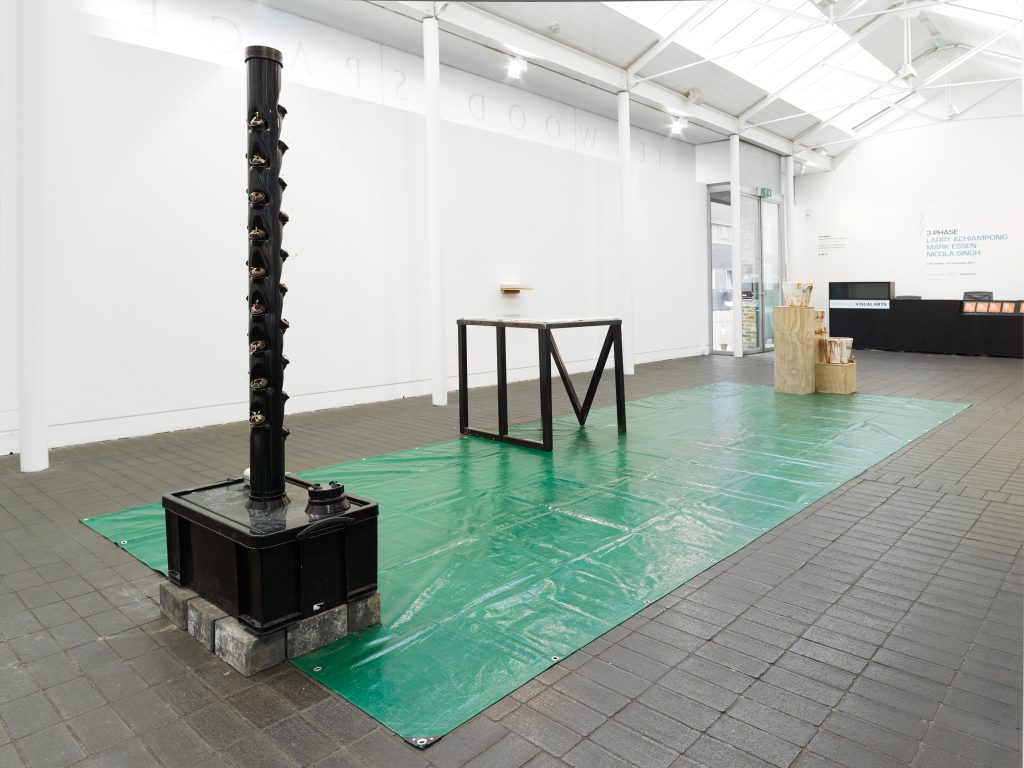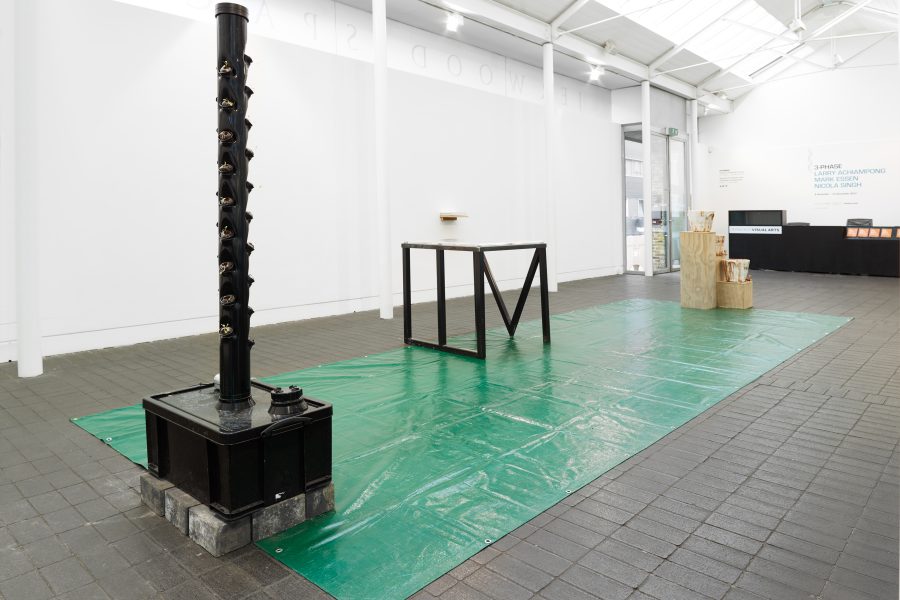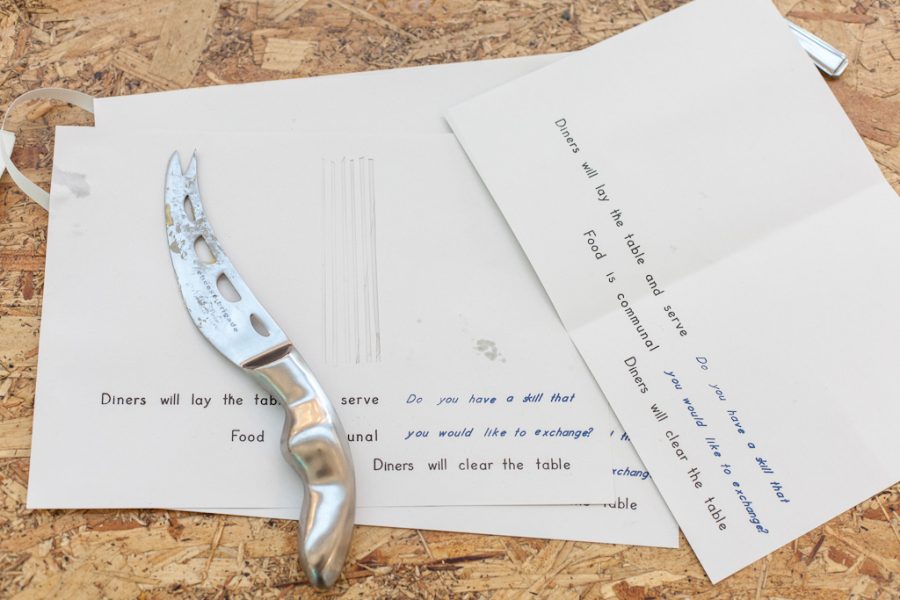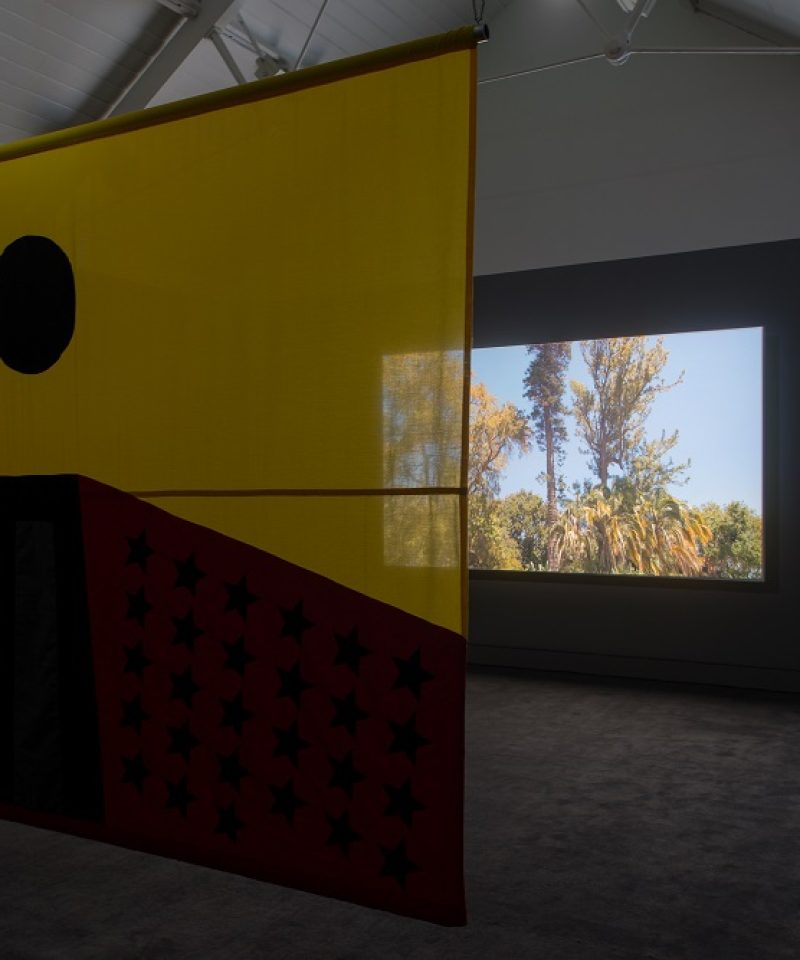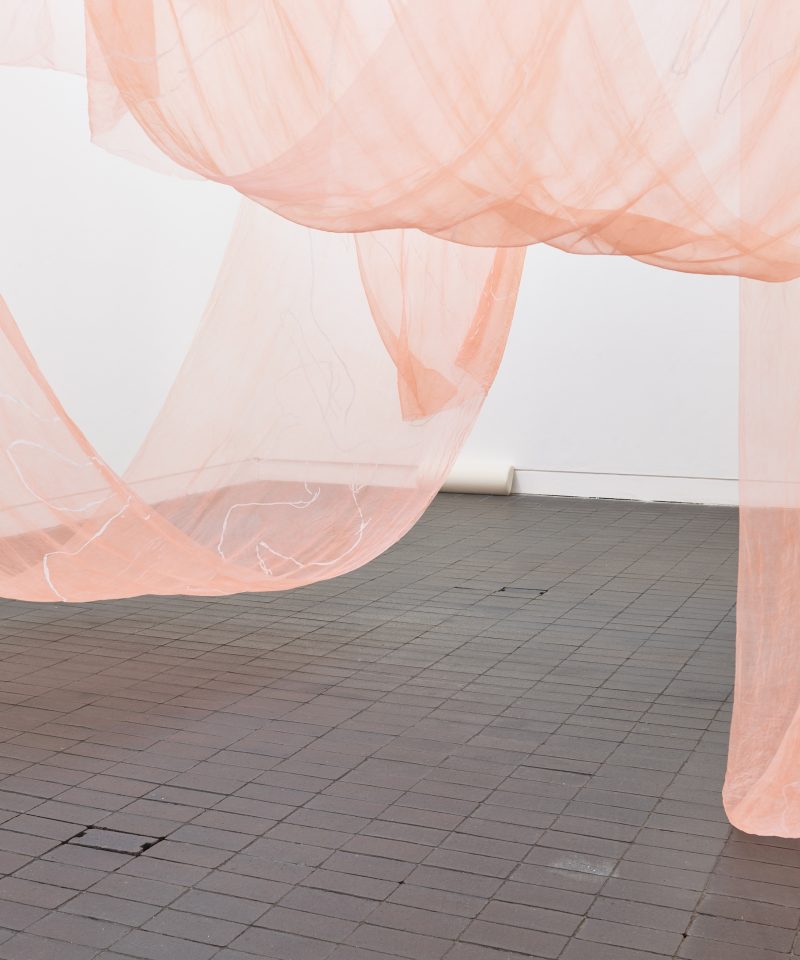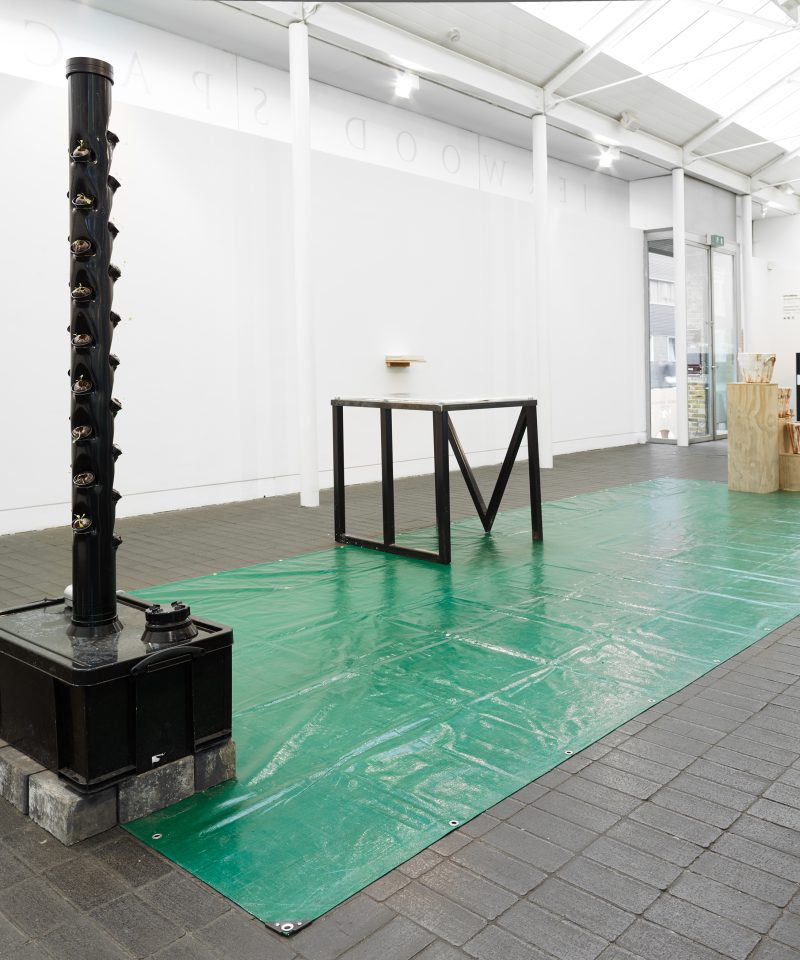‘Tis ‘Ard to be a God (2017), Mark Essen’s contribution to 3-Phase, begins to tell you something about him, as the Birmingham-based artist adopts the Brummy accent to the phonetic spelling of the title of his work. In a nationwide art-scene that continues to be hostile towards any accent outside of generic middle-class English, and where activity continues to be centred largely around London, this title begins to inform you of Essen’s resistance to this homogenisation, as well as the importance he places on local communities and regional identities. On a personal level, this simple gesture allowed me to form an immediate connection with the work. I’m from Dudley, and knowing that Essen is based nearby in Birmingham, the title sparked immediate recognition. I couldn’t help but read it in the accent, allowing me a way into the work and forming a degree of attachment before trying to engage with it critically.
The work itself is actually a trio of separate, but thematically linked pieces. The first, Believe Your Beliefs and Doubt Your Doubts (2017), consists of three ceramic water clocks, each labelled with one of the twentieth century’s dominant political ideologies: communism, fascism and capitalism. A Possibility This Will Never End (2017) is a display of various currencies, which include a group of local currencies such as the Brixton Pound, coins that have been defaced as a mark of protest, and Chinese ‘Hell Money’, notes which are printed to resemble legal tender but which are used for religious purposes. Lastly, The Illusion of Growth (2017) is an aeroponics tower, which will grow lettuces within the gallery space for the duration of the exhibition. The three pieces bring together fundamental aspects of human society – political power, money, and agriculture – with Essen inviting us to consider how we have lived, how we live now and how we could live in the future through an examination of past, present and future political and societal structures.
Believe Your Beliefs and Doubt Your Doubts shows us Essen ‘the ceramicist’ and ‘the craftsman’, as he presents the three simple forms of the water clocks, resembling their Ancient Greek counterparts. The work functions as a simple yet deft allegory for shifting individual politics, as well as the changing balance of power at the governmental level. One clock sits above the others at the top of the hierarchy, yet it gradually loses water as the clocks below gradually gain it. This results in the bottom clock holding everything, at which point it’s time for the whole structure to be rearranged. The piece is an unfortunate reminder of the popular resurgence of fascism; although largely considered to be a relic of the twentieth century, it has resurged today in the form of the far-right’s continued occupation of mainstream politics and public marches by white-supremacists in American cities.
Essen’s collection of currency, A Possibility This Will Never End, asks the viewer to consider the nature of value and exchange. A British coin defaced by the Suffragettes becomes a powerful symbol of protest because of the greater symbolic value of currency – marked with the face of Royalty and supplied by the Bank of England, it functions as a symbol of the power held by the state – rather than solely due to its monetary value. While the aforementioned ‘Hell Money’ is not legal tender, and as such holds no monetary value, its symbolic value is great enough that people will purchase it, exchanging legal tender to do so. Community currencies such as the Brixton Pound further complicate things, as it is not legal tender, but participants voluntarily recognise it as holding equivalent value to Sterling. This ultimately highlights that our use of Sterling is simply a state-sanctioned version of the same process – by participating in its use, we recognise that certain pieces of paper or metal hold monetary value. The global economy runs via this same process, something that feels as fragile as states ascribing value to the symbol of currency. This fragility is reduced to its most absurd potential in Season 3, Episode 1 of the science-fiction animation ‘Rick and Morty’, as the titular Rick clandestinely changes the value of the shared Galactic currency to ‘0’, thereby causing the immediate breakdown of an entire inter-planetary society.
The final component, The Illusion of Growth, is the most straightforward reference to Essen’s interest in Degrowth, the political, economic and social movement that advocates for smaller, localised economies rather than the current capitalist economic model. With the work’s title, Essen refers to the current economic model, whereby the economy is expected to grow every year via GDP (Gross Domestic Product) increasing. Even to a layman such as myself, with no nuanced understanding of economics, the idea that GDP can continue to increase indefinitely seems impossible. Growing lettuces with aeroponics towers is just one example of how local communities can act to become self-reliant and distance themselves from mass production, as food can be grown with minimal natural resources.
The Illusion of Growth also makes the gallery into a site for production, countering traditional notions of the exhibition as a final, static product. Of course, during the exhibition-making process, the gallery is regularly a site for production, but the idea of an exhibition being something that stands still, presenting a finalised artistic vision, remains pervasive, particularly in white-cube spaces. The literal growth of the lettuces through the exhibition presents a counter-narrative – that exhibitions can evolve and (literally) grow during their run. This becomes an appropriate metaphor for 3 Phase itself, as the exhibition will change and adapt for new ideas and new spaces, as it moves to WORKPLACE and Eastside Projects next year.
